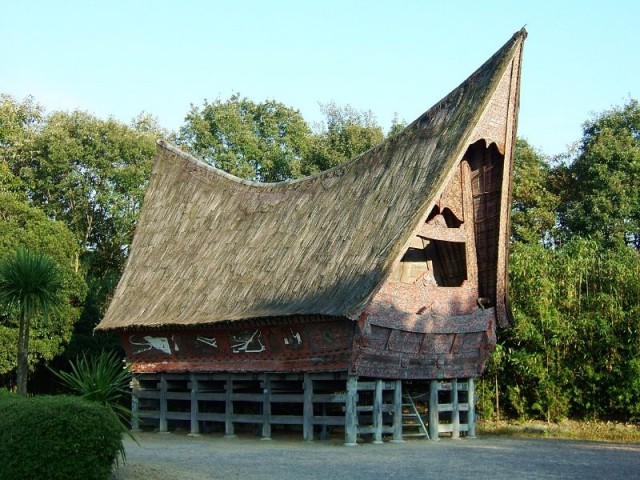vernacular housing
HUMAN GEOGRAPHERS often distinguish between the natural environment and the built environment. The latter, also known as the cultural landscape, consists of that part of our milieu that has been modified by human action. One category of cultural landscape is created by folk cultures, which are often found in rural areas; such people generally change slowly and in small increments. They may lack the technology required to change. Moreover, they often see no reason to change their traditional ways. Vernacular houses are an important feature of folk culture regions around the world.
Vernacular houses have the following characteristics. They are variable and distinctive in appearance from dwellings in other places; a method for preserving cultural heritage and attracting tourists; worth studying for their diagnostic value; often used for multiple functions such as economic activities; frequently reflections of the owners' religious beliefs; made mostly of locally available building materials; energy efficient and well-suited to local environmental conditions; sustainable with the technology available; and prominent and unchanging features in the cultural landscape.

Because folk cultures typically have lived in isolated places, they have shared ideas infrequently with other groups. A basic axiom of human geography is that isolation promotes cultural diversity. Each folk group, therefore, is distinctive. Their houses vary considerably from group to group. Many visitors think these dwellings are quaint. This fuels tourism by those who wish to visit traditional landscapes different from their own. Visitors should be careful to avoid equating quaintness with backwardness, however. Traditional designs and building methods have been proven for centuries to the extent that it may truly be said, “Tradition is wise.”
Some people who live in tourist destinations are starting to more actively maintain vernacular houses, as much to preserve the cultural heritage as to ensure that tourists have a rewarding experience. The New Vernacular Housing Movement in Great Britain is an example of this trend. Some governments have moved to protect folk houses by means of such measures as zoning regulations, building permits, or design review procedures. In MEXICO, owners are limited in the changes they are permitted to make to homes located in national historic districts. Elsewhere, governments have implemented taxation policies designed to ease the burden of historic home ownership.
Human geographers find that houses have considerable diagnostic value. They can tell us a great deal about the way of life of their inhabitants and how these people perceive and respond to the natural environments in which they live.
Vernacular houses may serve as more than just a dwelling. For example, they can function as a place of business for crafters or the center of operations for a farm. Many houses in rural Europe have farm buildings attached to the dwelling, both for convenient access to farm tools and animals and for energy savings. The form or orientation of homes may reflect the religious beliefs of some folk cultures. Many Mexican homes, for example, contain sacred corners or walls, while many villagers in CHINA traditionally used to situate their homes to prevent the entry of evil spirits.
The building materials that people use to construct houses are a consequence of their availability in the local environment. Stone, brick, mud, wood, leaves and grass are common choices. The scarcity of wood in arid regions leads many desert dwellers to conclude that they should construct houses with thick walls of stone or adobe mud bricks. Such walls provide protection from heat during the day but radiate heat back into the cold night air of the desert. Forest dwellers, on the other hand, are more likely to select wood as their main building material.
Architectural designs reflect the natural environment. Flat roofs or no roofs at all are sensible choices in regions with low rainfall. People who live in rainy areas, though, logically conclude that steeply pitched roofs are a better choice. Those who inhabit floodprone tropical rainy areas where temperatures are hot often construct cane-walled houses on stilts. This provides flood protection and allows free circulation of cool breezes beneath the house and through cracks in the walls. Literally thousands of different types of vernacular houses punctuate the landscapes of folk culture regions around the world.